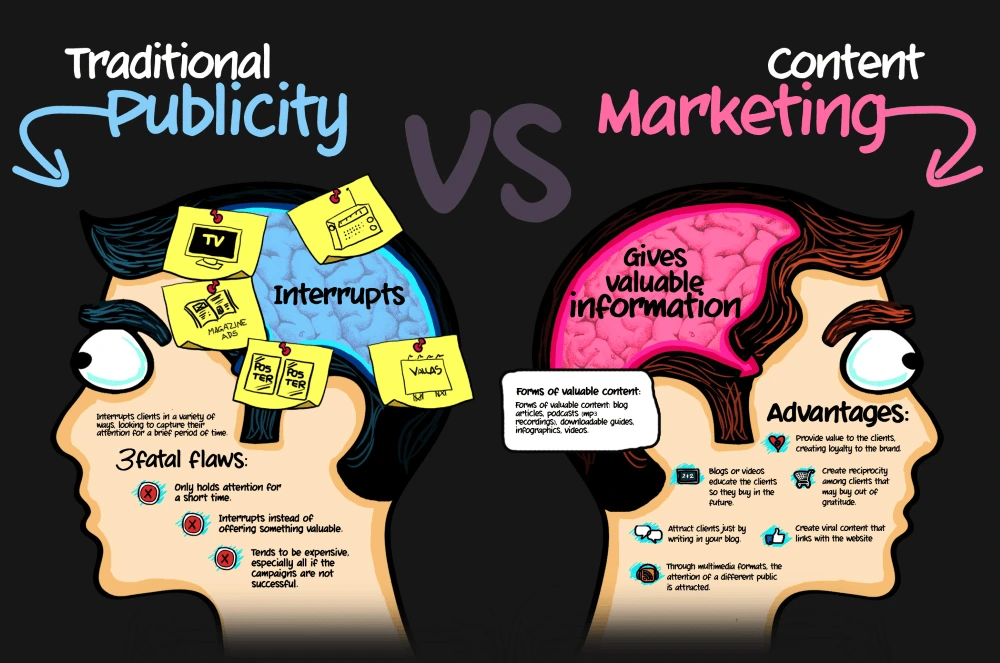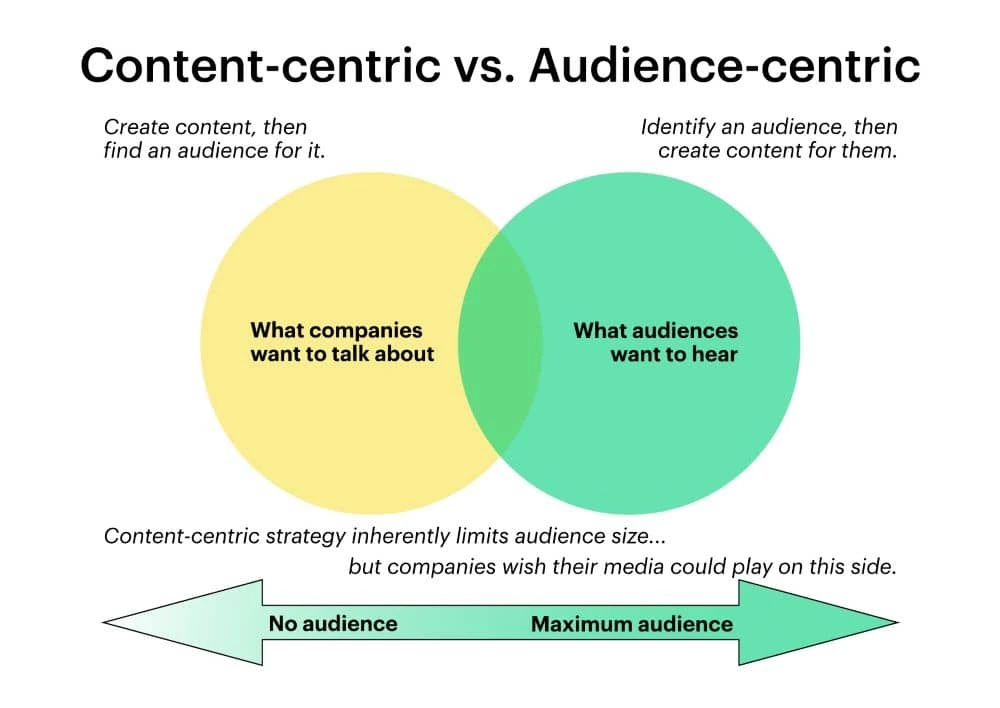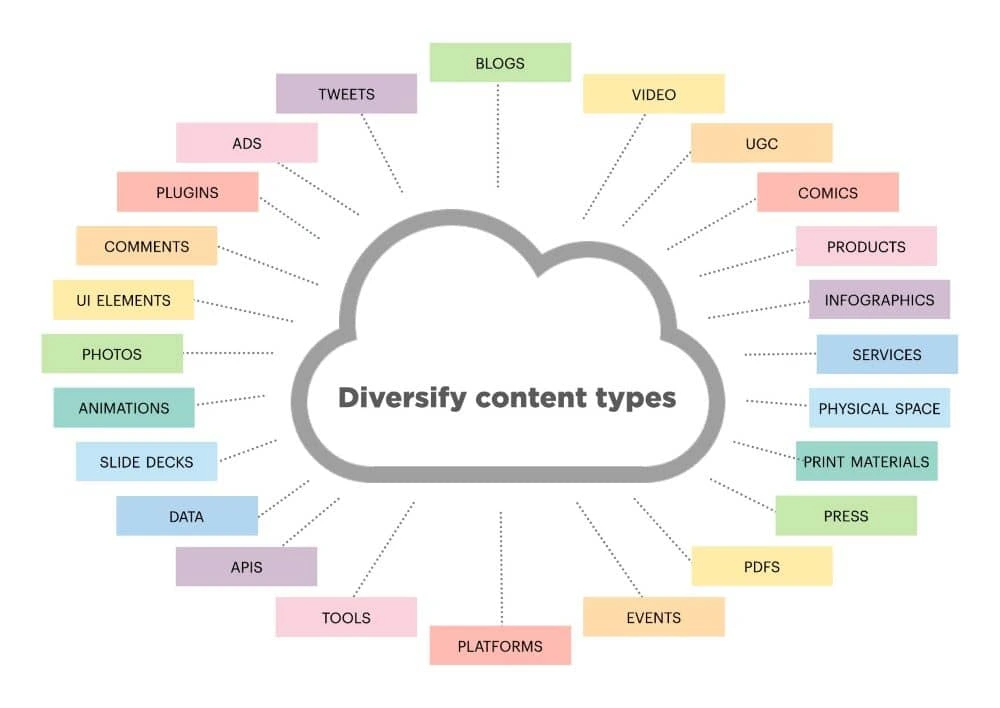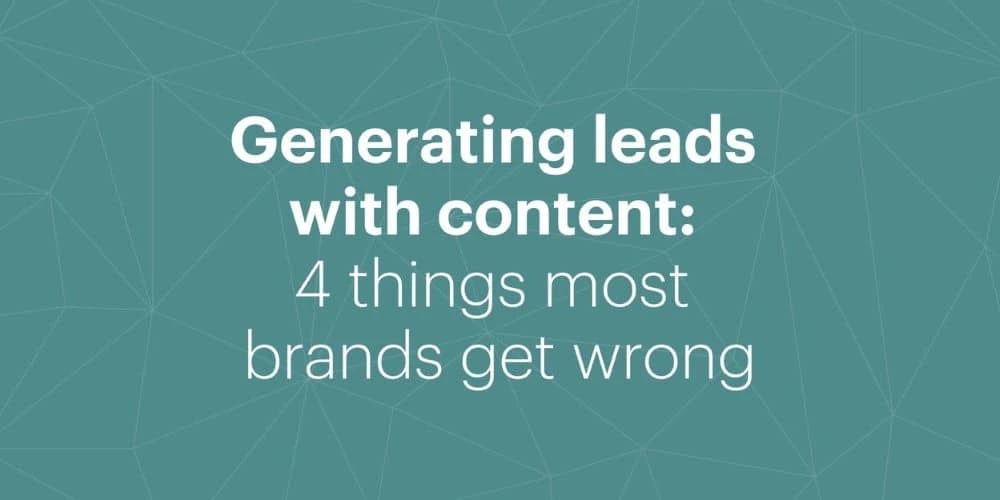Okay, so you’ve recently made the conscious decision to focus more of your energy on creating content with the hope of collecting more leads.
As an avid devourer of content yourself, you’ve seen a ton of other brands leverage content to generate massive amounts of buzz for their companies.
You’ve heard the success stories and statistics. You know content marketing can drive in 3x as many leads as traditional marketing—and it costs businesses 62% less than traditional methods, too.
Related: 5 myths that devalue your content marketing strategy
So, you decide to give it a shot. You spend hours creating a number of insightful and informative blog posts that you know your target audience will find valuable. You post them on your site, sit back, and wait for the new customers to start rolling in.
But… nothing happens. Those blog posts? Nobody’s reading them. Or—and this might sting even worse—people are reading them, but it hasn’t made a lick of difference to the size of your customer base.
In either case, it can be incredibly disheartening to realize your efforts haven’t paid off as well as you thought they would. On top of that, figuring out where you went wrong can be rather difficult, which may lead you to throw in the towel on your content marketing initiatives before they even get off the ground.
Before you throw your hands up in resignation, though, let’s take a look at some of the most common reasons many content marketing campaigns fall short of their intended goals.
4 content marketing mistakes that may be costing you leads
Before we dive in, let’s admit that the true list of reasons a given content marketing campaign could fail is inexhaustible. Because so much goes into content marketing, Murphy’s Law can rear its ugly head at almost any given time, for many different reasons.
For our purposes, though, we’re going to discuss some of the overarching mistakes and problems that could sabotage your content marketing campaign before you even get started.
Not focusing on your true purpose
Presumably, your goal is to generate more leads (and eventually more sales) by publishing intriguing and informative content for your audience to devour.
But have you really thought about how creating such content will actually lead more people to purchase your product?

Source: 87 seconds
The only thing worse than seeing no increase in your visitor count is seeing an increase in your visitor count but no increase in your sales numbers.
As you begin creating content, it can be easy to lose sight of the fact that your purpose is to create awesome content that leads your readers toward conversion. It can be easy to slip into a routine of churning out pieces of content that, while interesting and informative, simply don’t do anything to move your readers further along the buyer’s journey.
Solution:
Ask yourself the following question before you begin creating any piece of content:
How will this content benefit my reader and bring them closer to conversion?
It’s essential to keep in mind that content is not your product; it’s part of your marketing plan. [] While the content you create absolutely should provide value to readers, it should also provoke them to take action and engage further with your brand.
For individual pieces of content, you might aim to get your audience to sign up for a mailing list, follow your brand on social media, or share the article they’ve just read. Depending on the context, you might ask them to sign up for a demo of your product. While such calls-to-action are typically found at the end of a piece of content, they can also be placed within the content as appropriate.
Over a longer series of content, your goal is to build your readers’ understanding and curiosity about your brand and the services you provide. As this article from Copyblogger points out, you can use content to create “open loops” in your readers’ minds that essentially keep them wanting more—meaning they’ll look for ways to engage with your brand that ultimately may involve making a purchase.
Always remember that your main goal is to have them come away from your content closer to converting than they were before they read it.
Writing for a mass audience
As the old saying goes:
“If you try to please everyone, you’ll end up pleasing no one.”
Unfortunately, when getting started with your content initiatives, it’s tempting to create content that you believe will appeal to your entire consumer base at once. In doing so, you end up creating content that is either:
- So general that it doesn’t provide value to any individual audience members
- So packed with information that it completely overwhelms your audience
In either case, the result will almost certainly be the same: your potential customers will bounce from your content without taking the action you hoped they would.

Source: Content Marketing Institute, lovingly recreated in Lucidpress
Solution:
First things first, make sure you’ve developed a variety of personas to target. Find out as much as you can about the people who belong to these segments: their demographic and geographic data, their personality types, and their actions and behaviors as consumers.
Once you’ve defined and developed a number of customer personas, you can begin planning content intended for each of them (rather than using a “one-size-fits-all” approach).
While this means you’ll be creating more pieces of content, you’ll ensure each piece of content will resonate with its intended audience.
You can make sure the right content gets in front of the right person in a few ways:
- Categorizing posts on your blog by topic
- Implementing a search function on your site
- Allowing mailing list subscribers to choose which content they receive in your newsletter
Focusing on one content format
Typically, when most people hear the phrase “content marketing,” they automatically think about blogs.
But there are many, many more types of content out there for you to choose from.

Source: iPullRank, lovingly recreated in Lucidpress
Content marketing is the act of using content to market your brand. With that in mind, the following are just a handful of content types that you can leverage for marketing purposes:
- Podcasts
- Webinars
- Social media posts (see templates)
- eBooks (see templates)
- Infographics (see templates)
Simply put, sticking to one type of content is a good way to bore your audience. No matter how valuable your blog posts may be, your readers will likely get tired of them at some point if you don’t change things up a bit.
Solution:
Your first order of business is to determine which formats will best engage your audience.
Some individuals devour podcasts on a daily basis during their morning commute, while others would rather read an eBook while relaxing on their couch at night. Still others might not have the time to devote to these ventures and would prefer to get quick-hitting information via infographic.
As you do when figuring out what your audience wants to know, it’s also important to determine how they want to receive this information.
Even though you’re going to create content in a variety of formats, that doesn’t mean you need to create completely new content for each. In other words, you can repurpose content you’ve previously created and present it through a different format.
You’ll definitely want to tweak the content so it fits its new platform, but generally speaking, the meat of the content will remain the same. For example, when repurposing a blog post into an infographic, you’d typically include only the hard-hitting facts and statistics mentioned in the article (leaving out the “discussion” parts).
By repurposing your most successful content in a variety of formats, you can give the piece maximum exposure across the customer segment it was intended for.
Not following up (or through)
In the intro, we set up a hypothetical scenario in which a content marketer creates a handful of blog posts, publishes them, then sits back and waits for business to start booming… and it never happens.
A big mistake many marketers make when starting out with content is living by the old adage, “If you build it, they will come.”
It just doesn’t work that way. With over 2 million blog posts being published every day, the chances of new readers just happening upon your content are practically zero.
But, even assuming you do generate some traffic to your new content, you still haven’t succeeded yet, and you can still miss out on major opportunities. Another mistake beginner content marketers make is failing to engage with their audience members after they’ve reeled them in. They also miss out on the opportunity to not only nurture these individuals through the buyer’s journey, but to learn more about their needs.
Solution:
The solution here is two-pronged.
First, focus on promoting your content. There are a number of ways you can do this, including:
- Sharing links via social media, adding relevant hashtags to the post
- Posting links in appropriate online communities, such as Reddit or Quora
- Engaging with influencers and bloggers who write about your industry to see if they’d be interested in sharing your content
Once you’ve gained some visibility and have begun seeing audience members engage with your content, don’t let them go. If they’ve left a comment on your blog, keep the conversation going; if they’ve shared your content on social media, shoot them a quick “thank you”; if they seem to be looking for more information, give it to them!
Technically speaking, once your content has attracted a potential customer, it’s done its duty. But the work you put into this content will be for naught if you don’t follow up with the lead as soon as you possibly can.
Key takeaway
It’s no secret that content marketing can be an effective way to attract highly qualified leads that have a good chance of converting. This is, in large part, why 92% of companies view their content marketing efforts as a business asset.
But if done haphazardly, your content marketing efforts can lead to nothing but wasted time, energy and money.
Before you dive into your next content marketing campaign, keep in mind that the purpose is not just to create amazing content, but to create amazing content that ultimately leads your audience toward conversion.



